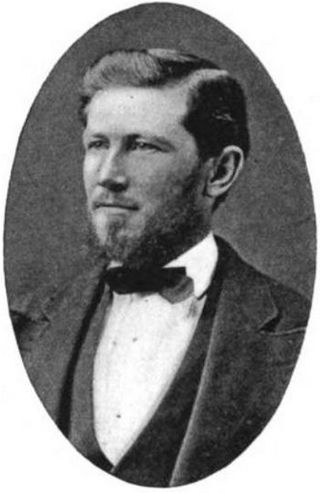Related Research Articles

Ava is a town in Oneida County, New York, United States. The population was 678 at the 2010 census..

The governor of Hong Kong was the representative of the British Crown in Hong Kong from 1843 to 1997. In this capacity, the governor was president of the Executive Council and commander-in-chief of the British Forces Overseas Hong Kong. The governor's roles were defined in the Hong Kong Letters Patent and Royal Instructions. Upon the end of British rule and the handover of Hong Kong to China in 1997, most of the civil functions of this office went to the chief executive of Hong Kong, and military functions went to the commander of the People's Liberation Army Hong Kong Garrison.

Megan's Law is the name for a federal law in the United States requiring law enforcement authorities to make information available to the public regarding registered sex offenders. Laws were created in response to the murder of Megan Kanka. Federal Megan's Law was enacted as a subsection of the Jacob Wetterling Crimes Against Children and Sexually Violent Offender Registration Act of 1994, which merely required sex offenders to register with local law enforcement. Since only a few states required registration prior to Megan's death, the state level legislation to bring states in compliance—with both the registration requirement of Jacob Wetterling Act and community notification required by federal Megan's Law—were crafted simultaneously and are often referred to as "Megan's Laws" of individual states. Thus, federal Megan's Law refers to community notification, whereas state level "Megan's Law" may refer to both sex offender registration and community notification.
BACnet is a communication protocol for building automation and control (BAC) networks that use the ASHRAE, ANSI, and ISO 16484-5 standards protocol.

The County of Bentheim was a state of the Holy Roman Empire, located in the south-west corner of today's Lower Saxony, Germany. The county's borders corresponded largely to those of the modern administrative district (Landkreis) of Grafschaft Bentheim.

The Curtius rearrangement, first defined by Theodor Curtius in 1885, is the thermal decomposition of an acyl azide to an isocyanate with loss of nitrogen gas. The isocyanate then undergoes attack by a variety of nucleophiles such as water, alcohols and amines, to yield a primary amine, carbamate or urea derivative respectively. Several reviews have been published.

A fire alarm system warns people when smoke, fire, carbon monoxide, or other fire-related or general notification emergencies are detected. These alarms may be activated automatically from smoke detectors and heat detectors or may also be activated via manual fire alarm activation devices such as manual call points or pull stations.
A notifiable disease is any disease that is required by law to be reported to government authorities. The collation of information allows the authorities to monitor the disease, and provides early warning of possible outbreaks. In the case of livestock diseases, there may also be the legal requirement to kill the infected livestock upon notification. Many governments have enacted regulations for reporting of both human and animal diseases.

Honor Harger is a curator and artist from New Zealand. Harger has a particular interest in artistic uses of new technologies. She is currently the executive director of the ArtScience Museum in Singapore.

A death notification is the delivery of the news of a death to another person. It describes the moment a person receives the news of someone's death. There are many roles that contribute to the death notification process. The notifier is the person who delivers the death notice. Notifiers can be military, medical personnel or law enforcement. The receiver is the designated person receiving the information about the deceased. Typically, the receiver is a family member or friend of the one who has died. Death education is provided for multiple types of jobs to deliver the news efficiently for each situation. A proper death notification allows the receiver to begin the grieving process. The history of death notification dates back to the existence of humankind, but there have always been different means of death notification. Before modern technology, death notification was done through telegram, as there were not the same means of transportation, which today allow for the more formal notification that is required. During the 1800s and early 1900s, death notification was not as complex a process as it is today. There were not the means to deliver a written notification, so notices were left at funeral homes. Today, there are more requirements to follow. One of these requirements being that the name of the deceased is not released to any outside sources until after the survivors are being notified. One key reason being that the survivors are the first to find out in the formal manner.

James Douglas Morrison was an American singer, poet and songwriter who was the lead vocalist of the rock band the Doors. Due to his wild personality, poetic lyrics, distinctive voice, unpredictable and erratic performances, and the dramatic circumstances surrounding his life and early death, Morrison is regarded by music critics and fans as one of the most influential frontmen in rock history. Since his death, Morrison's fame has endured as one of popular culture's top rebellious and oft-displayed icons, representing the generation gap and youth counterculture.

Christianity in Brunei is the second largest religion practiced by about 7.1% (29,510) of the population as of 2016.
The Progressive Librarians Guild(PLG) was founded in New York City in January 1990 by librarians concerned with the library profession's "rapid drift into dubious alliances with business and the information industry, and into complacent acceptance of service to an unquestioned political, economic and cultural status quo," according to the organization's statement of purpose. The initial three organizers were Elaine Harger, Mark Rosenzweig and Elliot Shore. The PLG addresses issues especially relating to librarianship and human rights.
Harger is a surname. Notable people with the surname include:
Nathan Harger is a photographer based in New York City.

Plaza Towers is a mixed-use highrise building in Grand Rapids, Michigan. At 345 feet (105 m), it was the tallest building in the city until the completion of the River House Condominiums in 2008. The building contains apartments on floors 8–14, individually owned condominiums on floors 15–32, and a 214-room Courtyard by Marriott hotel on floors 1–7.
Rolla Neil Harger invented an early breathalyzer, called the Drunkometer, to test for driving under the influence in 1931; he was awarded the patent in 1936. He was biochemistry and pharmacology department chairman of the Indiana University School of Medicine from 1933 to 1956 and worked as a professor in the department of biochemistry and toxicology from 1922 to 1960.

The Security Building, also known as the Stampfer Building, is a historic structure in Dubuque, Iowa, United States. The cream-colored building is associated with the J. F. Stampfer Co. department store.

Oscar Harger was an American invertebrate zoologist and paleontologist known for his studies on isopods, and for his work as an paleontological assistant to Othniel Charles Marsh.
References
- ↑ Swenna Harger & Loren Lemmen, The County of Bentheim and her Emigrants to North America, 4th edition (Holland, MI: Swenna Harger, 1994), p. 7.